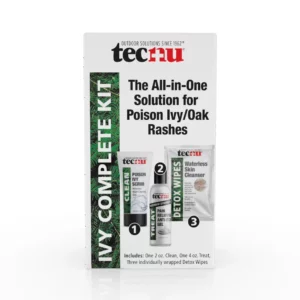First Aid Fix: How to Stop a Cut From Bleeding

Cuts and wounds are everyday occurrences, whether from kitchen accidents, outdoor activities, or minor mishaps. While most cuts are minor and can be managed at home, knowing how to stop bleeding effectively is essential for preventing infections and promoting proper healing. In this comprehensive guide, we'll explore the necessary steps to stop bleeding from a cut and provide guidance on when to seek medical attention.
Understanding Open Wound Healing
Bleeding emergencies vary in severity, from superficial cuts to deep wounds that require immediate medical attention. Recognizing the signs of severe bleeding is crucial for determining the appropriate response. Signs of severe bleeding include persistent bleeding, spurting blood, or a wound that won't stop bleeding despite applying pressure.
How to Stop a Cut From Bleeding
When faced with a bleeding wound, taking prompt action can make a significant difference in preventing further complications. Here's a detailed guide on how to stop bleeding effectively:
- Examine the Wound: Begin by assessing the wound's size, depth, and location. If the wound is deep, large, or jagged or appears to be losing a significant amount of blood, seek medical assistance immediately.
- Apply Direct Pressure: Use a clean cloth or sterile gauze pad to apply firm pressure directly on the wound. Maintain pressure for several minutes until the bleeding stops or significantly reduces. Elevating the injured limb or body part above heart level can help reduce blood flow to the wound site and aid in the clotting process.
- Apply NuNature First Aid Gel & Cover: Once the bleeding has stopped or slowed down, apply NuNature First Aid Gel to the wound. This gel contains antiseptic properties that help clean the wound and prevent infection. Gently spread a thin gel layer over the wound site, ensuring complete coverage. Cover the wound with a clean, sterile bandage to protect it from further contamination.
When to Contact Your Doctor
While most cuts and minor wounds can be treated at home, certain circumstances require medical attention. Contact your doctor or seek emergency medical care if:
- The wound is deep, large, or jagged and may require stitches.
- The bleeding does not stop or is accompanied by severe pain.
- Signs of infection develop, such as redness, swelling, warmth, or pus drainage.
- You are unable to clean the wound properly or remove foreign objects.
- You have concerns about the wound's healing progress or potential complications.
Understanding Hemorrhaging
Hemorrhaging, or uncontrolled bleeding, can be life-threatening if not addressed promptly. Internal bleeding, in particular, can be challenging to detect but may present symptoms such as abdominal pain, dizziness, or fainting. If there is suspicion of internal bleeding, seek medical attention immediately.
Using a Tourniquet in Emergency Situations
In extreme cases of severe bleeding, such as arterial bleeding or traumatic injuries, a tourniquet may be necessary to stem the flow of blood. However, tourniquets should only be used as a last resort and by individuals trained in their proper application.
Knowing how to stop bleeding effectively is a valuable skill that can save lives. By following the steps outlined in this guide and knowing when to seek medical attention, you can effectively manage bleeding emergencies and promote better outcomes for yourself and others. Remember to stay calm, assess the situation carefully, and take prompt action to stop the bleeding. With the right knowledge and resources, you can be prepared to handle any cut or wound that comes your way.





